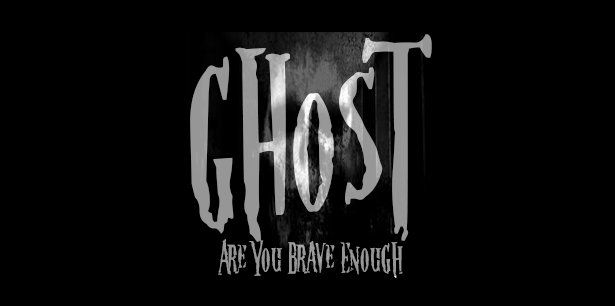- Gary Taylor-Green
- Jun 17
- 4 min read
Planning an exclusive paranormal experience can be an exhilarating journey into the unknown. Whether you're a firm believer in the supernatural or just curious about the mysteries of the afterlife, organizing an immersive experience can leave you with stories to tell for a lifetime. In this guide, we will explore how to create a memorable paranormal adventure, from choosing the right location to what tools and techniques to use during your exploration.
What Makes a Paranormal Experience Exclusive?
When we talk about an exclusive paranormal experience, we mean an encounter that goes beyond the typical. These experiences often take place in unique locations that have rich histories or intriguing backgrounds. For example, old castles, deserted asylums, or historic battlefields can serve as excellent venues. The key factors that create exclusivity include privacy, personalized experiences, and a connection to the supernatural.

To enhance the exclusivity, consider booking a private event. This allows you to gather your friends or family without other groups infringing on your experience. Plus, many companies offer customized packages that focus on the types of hauntings you're interested in, be it ghost sightings, EVP sessions, or historical tours.
Choosing the Right Location for Your Paranormal Adventure
One of the most vital steps in planning an exclusive paranormal experience is choosing the right location. Your choice will significantly influence the vibe and authenticity of your adventure. Here are some tips to guide you:
Research Haunted Locations: Look for places that have documented paranormal activities. Websites, books, and documentaries can provide insights into the most haunted spots around your region.
Consider Accessibility: Ensure that the location is accessible for all participants. A place that requires extensive travel may become a hassle, especially for large groups.
Historical Context: Locations that have rich historical narratives generally provide deeper immersive experiences. Understanding the history can prime the senses and heighten the experience.
Availability: Check if the venue allows for private bookings. Certain historical sites have restrictions on when or how many guests can visit, particularly after dark.
It's advisable to visit the site beforehand if you're able to, allowing you to plan activities around its layout effectively.

Tools and Techniques for Paranormal Investigation
Once you have your location secured, the next step is gathering the right tools. Whether you prefer classic techniques or modern equipment, the following tools can enhance your paranormal experience:
EMF Meter: This is used to detect electromagnetic fields, which are often said to fluctuate in the presence of spirits. Understanding the readings can guide your investigation.
Digital Voice Recorder: Great for EVP (Electronic Voice Phenomena) sessions, where participants can ask questions and listen back for any unexplained sounds.
Infrared Camera: If you want to capture potential ghostly apparitions or orbs, an infrared camera allows you to see in the dark and can even reveal things the human eye might miss.
Dowsing Rods: An age-old tool used to detect spirits or energy trails. They can add a tactile element to your investigation.
Flashlight and Extra Batteries: Always be prepared with a reliable light source. Paranormal investigations often require low light, but you’ll need something to illuminate the surrounding area.
Using these tools properly requires practice, so familiarize yourself with their functions before your exclusive paranormal outing.
Planning the Schedule and Activities
Timing is everything in the paranormal world. To maximize your experience, develop a detailed schedule that includes various activities. Here’s a framework to guide you:
Welcome and Overview: Gather your participants to discuss the itinerary, introduce the tools you'll use, and share some fascinating local ghost stories for ambiance.
Activity Sessions: Break the night into several shorter activities, such as:
EVP Sessions: Allocate about 30 minutes at different spots deemed more active.
Historical Walk: Provide context and background of the site while exploring its notable places.
Free Exploration: Give your guests some time to wander and explore with their equipment.
Wrap-Up Session: End the night by gathering everyone together to share experiences. This session allows prospective participants to discuss what they felt, observed, or recorded, creating an engaging dialogue.
Make sure you also factor in breaks, refreshments, and downtime. Events that run too long may lead to fatigue and diminished focus.

Safety Tips for an Exclusive Paranormal Experience
While the thrill of exploring haunted locations can be exhilarating, safety should always be a priority. Here are essential tips for ensuring your group's well-being:
Know Your Location: Familiarize yourself with the layout of the venue. Obtain any necessary permits or permissions before venturing out.
Pack First Aid Kits: Always keep a well-stocked first aid kit on hand in case of minor injuries, especially in locations that are not well maintained.
Stay Hydrated and Energized: Bring ample water and snacks to keep energy levels up. Tired participants may become careless.
Set Group Rules: Establish clear guidelines about staying together and respecting the environment. Wandering off can lead to accidents or lost individuals.
Have a Backup Plan: If things do not go as planned, have alternative activities ready. This is especially useful if equipment fails or if participants feel uncomfortable.
By addressing safety concerns in advance, you can ensure that everyone enjoys their exclusive paranormal experience without worry.
Final Thoughts on Planning Your Exclusive Paranormal Experience
An exclusive paranormal experience is more than just a fun night out. It's an opportunity to connect with history, delve into your fears, and perhaps even encounter the unknown. With thoughtful planning, the right tools, and a respectful approach to the locations you visit, you can create lasting memories that resonate long after the event.
For those looking to elevate their paranormal experiences further, consider private ghost hunting events tailored just for your group. Such events allow you to focus on what truly intrigues you, ensuring every moment is captivating and unique.
Now that you're equipped with all the knowledge necessary, it's time to gather your crew and embark on your own unforgettable paranormal adventure. Happy haunting!













